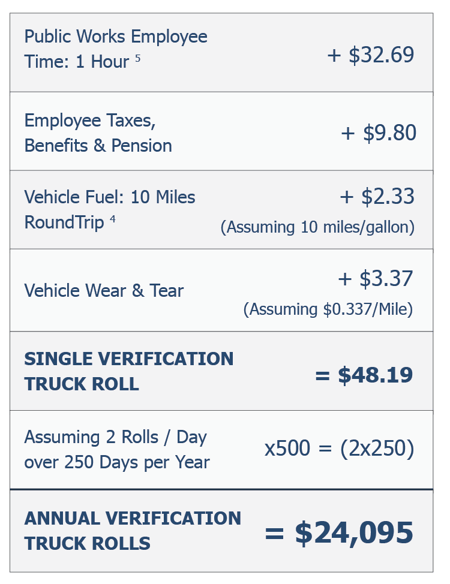
*This article has been updated on April 15, 2020, with new data on the impact of channel shift.*
The basic idea of channel shift is to take communication and shift it from one medium to another. For local governments, channel shift has involved moving constituent communications to digital formats as technology evolves.
Though digital technology is new, channel shift is actually not all new to the public sector. The advent of telephones in the 20th century, for example, added a whole new medium of communication for residents. Before phones, residents’ only way to connect with their government was by mailing a letter or physically going into city hall. But phones added a whole new way to communicate, and I bet most of us couldn’t imagine constituent engagement without it today!
Now, another channel shift is well underway. Digital formats have enabled numerous new methods of communication that include email, smartphone apps, contact forms on your website, live chat, social media, and even bots. Your constituents (and likely yourself, too) have already incorporated these technologies into their lives.
But many local governments find themselves behind the times. Are your residents able to access services and submit requests from the communication devices they use every day? Or are they limited in how they contact you by outdated methods and systems?
When governments embrace channel shifts, they are better able to serve their constituents.
Why should governments undertake channel shift programs?
The cost per transaction of a live telephone agent or in-person representative is incredibly high. You must account for that employee’s time, which includes salary, benefits, and even the physical office space that they use to work.
Because of the reduced resources needed, digital transactions have a lower cost per transaction. For governments with budgetary constraints, the cost is the biggest driver behind channel shift.
And there’s a lot to gain, too. When the UK-based Local Government Association enacted a digital channel shift grant program, the organization found that participants generated over $2.1 million (£1.69 million) in efficiency savings and increased income in the first year.
When you include more forms of communication, your constituents get to opt into their preferred communication method.
For many people, phone calls or other live interactions are not ideal methods of communication. Sometimes, it’s better to find what you need by searching on your phone or using text to communicate! When multiple outreach mediums are accessible and easy to find, your residents will feel empowered to connect.
One great benefit of digital formats over other communication channels is digital’s unprecedented ability to capture data. When citizen requests are captured and stored digitally, you are able to look back through and analyze important details quickly and at scale.
Let’s take a digital service request platform as an example, on which citizens can report graffiti. With each report comes a date, time, and location. Analyze that data and you may identify trends – is your city seeing an uptick in graffiti in a new area? Should you increase law enforcement in the area? Down the line, did this increased presence actually have an impact?
Making informed decisions based on data can increase your agency’s efficiency, reduce costs, and improve the life of your citizens. And digital channel shift makes it possible – could you imagine digging through years of paper records in filing cabinets to perform this analysis?
The right approach to channels shift mentality
In the early days, the channel shift within municipal government was not always welcomed with open
arms. If you are worried that adding another channel of communication is just another way to add complexity and cost to your organization, don’t be. With a solid channel shift strategy and the right tools in place, channel shift can create efficiencies and improve citizen interactions.
But as the world has truly embraced the internet, smartphones, and more, we’re seeing local governments view digital channel shift as a necessity. Citizens prefer online and mobile communications – it’s time for their governments to catch up.
Government innovators realized that for certain transactions, such as service requests for reporting potholes or broken park equipment, the cost per transaction can be reduced by accepting requests digitally versus through a live representative. Beyond that, this lowers the barrier for reporting issues, allowing anyone willing to help maintain their community to submit via app, website, or over the phone.
Ultimately they could shift these types of service request reporting onto less expensive channels and use costlier resources for complex situations that need more attention.

ROI for Truck Verification Roll and Constituent Reporting
Channel shift supports cost-cutting, not job-cutting
Cost savings from channel shift come from increased efficiency, not the decreased need for customer service employees! Though many associate new technologies with layoffs, that does not have to be the case.
As important as digital channels are at present, there is still a need for customer service. Some service requests or transactions involve more complexity. When customer service agents have more availability to help with complex issues, like building permits, new business permits, or land redevelopment requests, your whole city’s operations (and even revenue) are improved.
Channel shift provides an opportunity for assigning the right resource for the right job and allows you to free up resources from low-value transactions to work on the value transactions including those that generate more revenue.
Channel shift: The next frontier
Channel shift has continued to develop in the public sector. Local governments that were early adopters have now started to scale their digital communications to include two-way digital communications, mobile apps, and chatbots. Beyond that, the scope of digital services has increased, with some allowing citizens to apply for permits, make bill payments, and get notifications based on their location.
Communication between local governments and their constituents is going to continue to expand in terms of the number of channels in which they use to communicate. Governments should push innovative channel shift ideas to actively serve their citizens on all the channels they use every day.